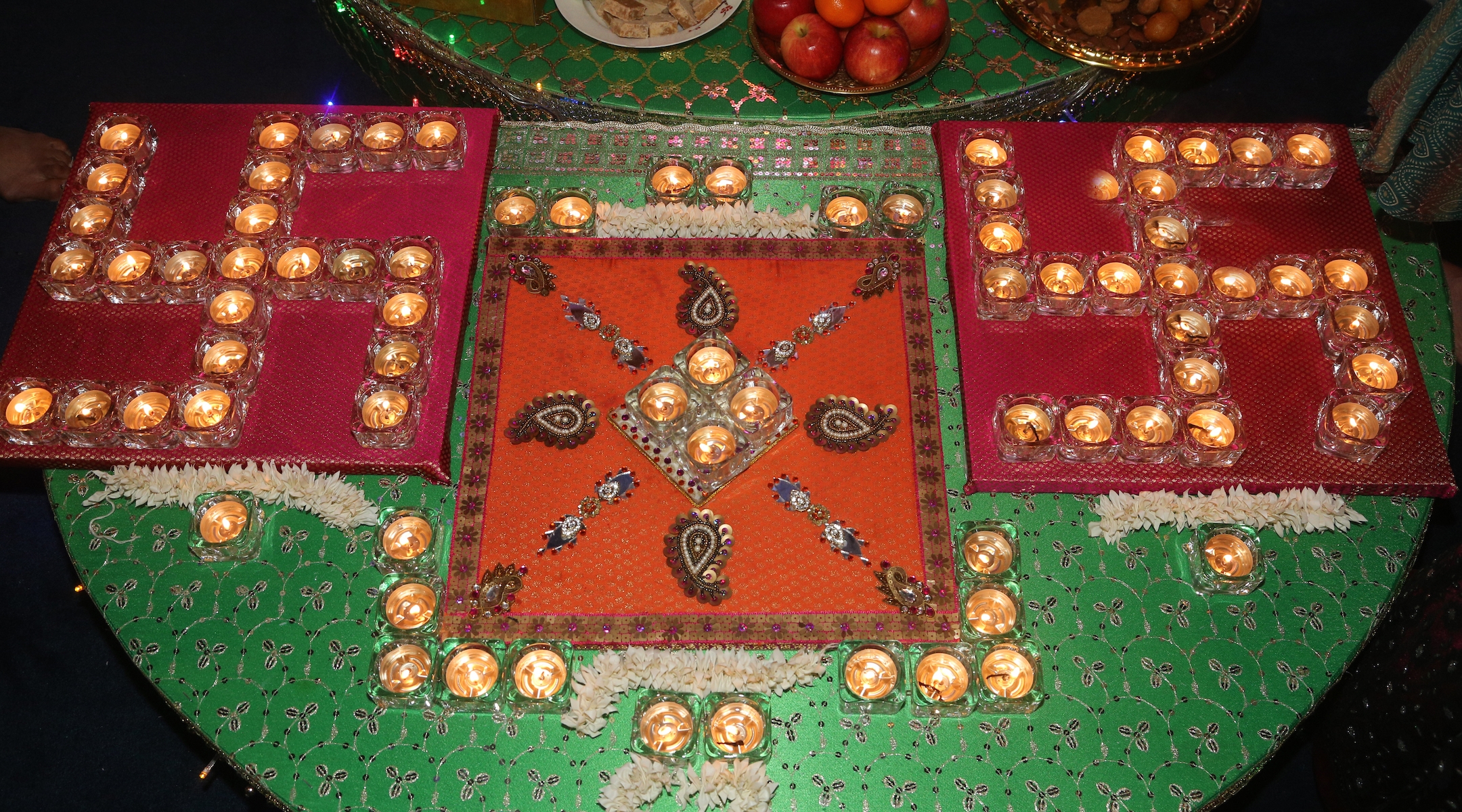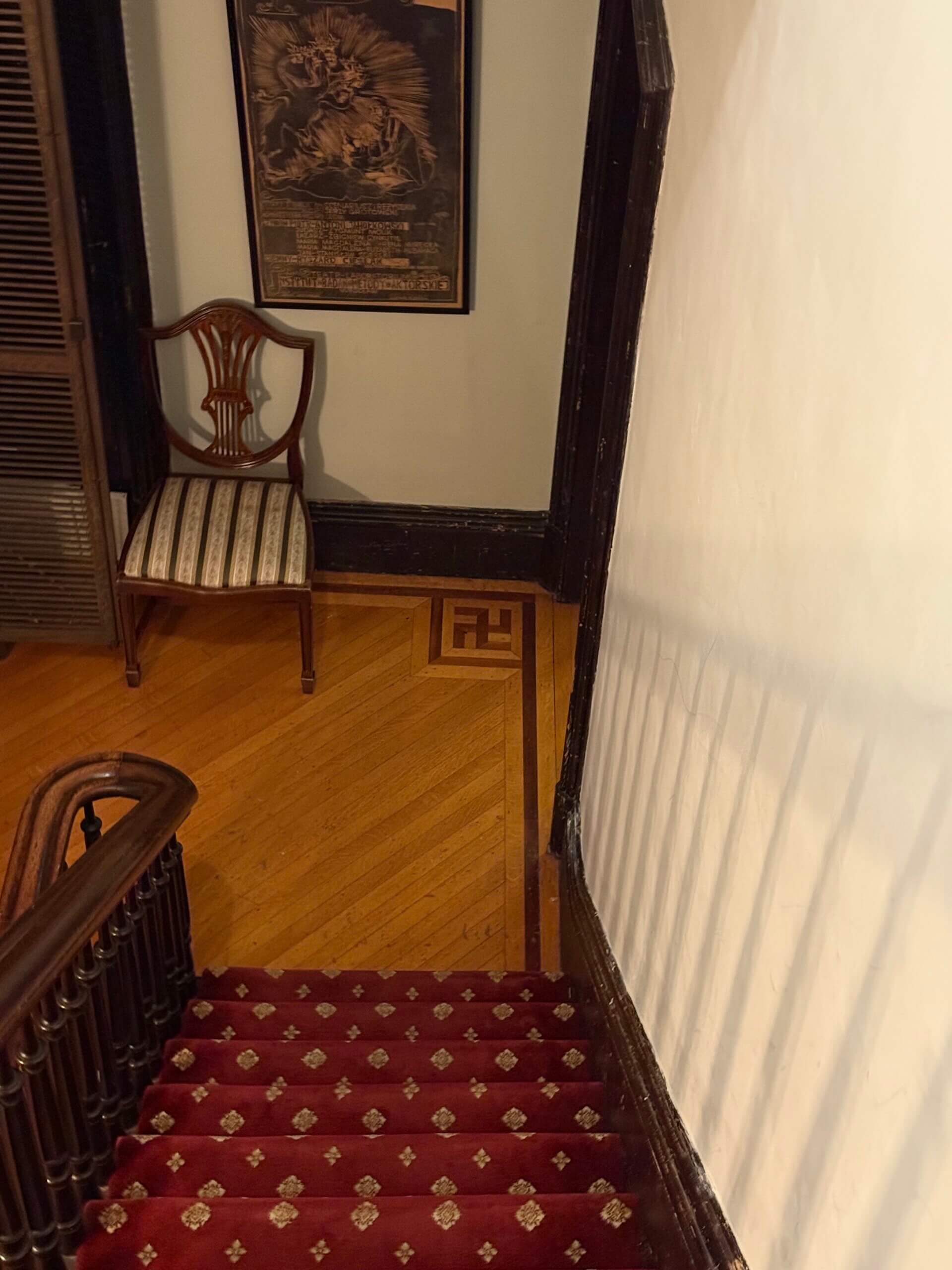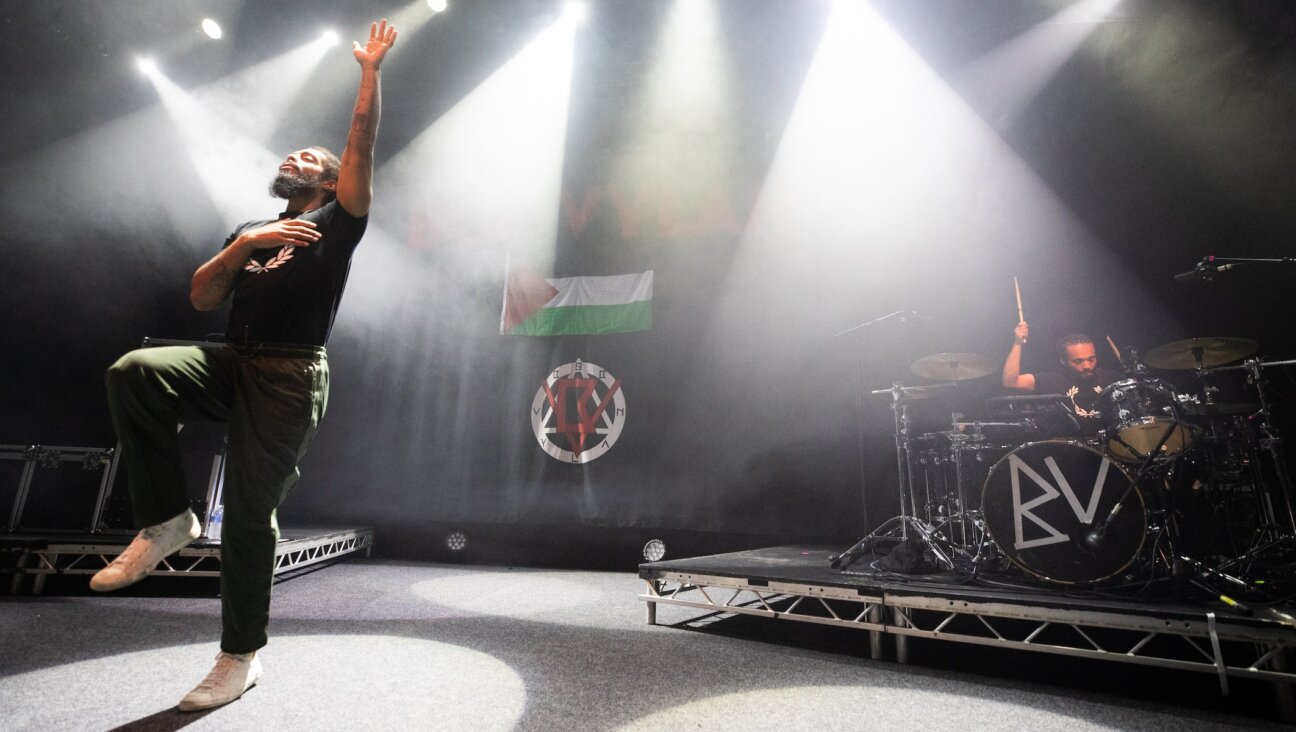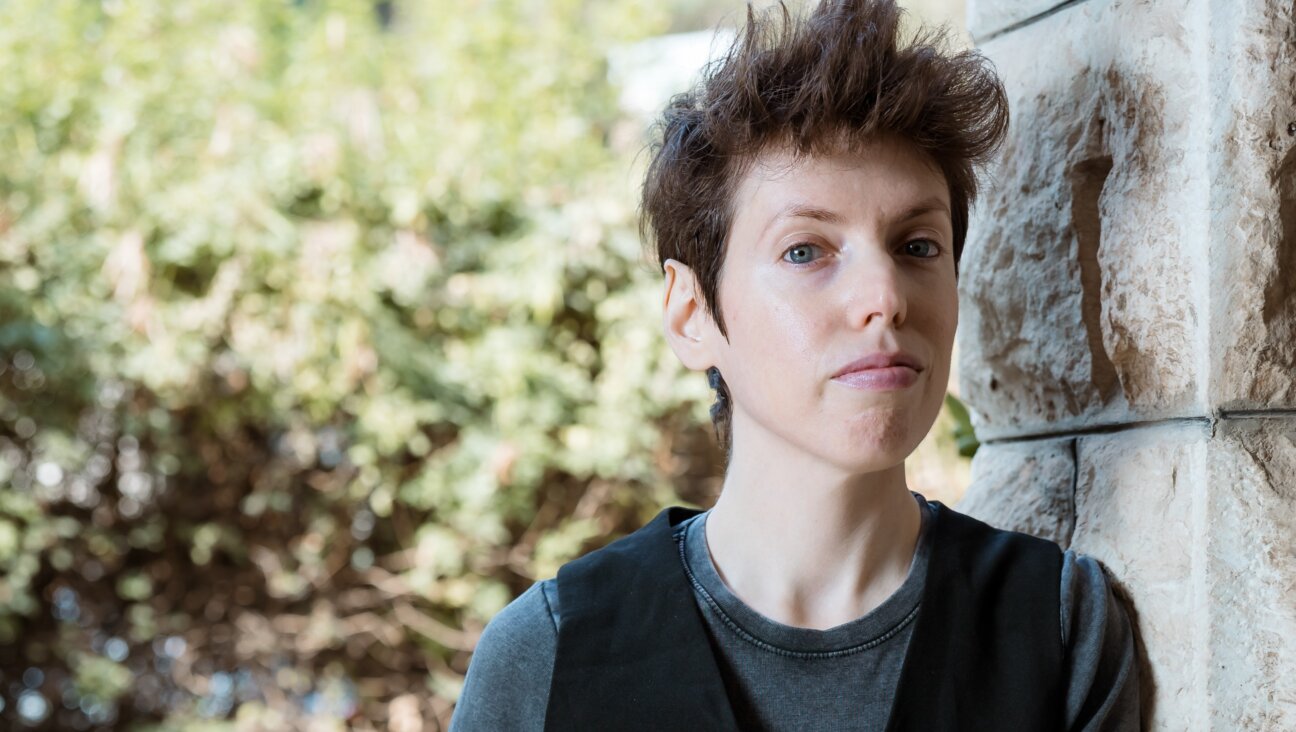So, there was a swastika at my Airbnb
The way Indians handle the Nazi appropriation of a sacred symbol could be a lesson for Jews

Diyas (lamps) in a swastika pattern by a shrine to the Goddess Lakshmi during the festival of Diwali at a Hindu temple in Toronto, Nov. 7, 2018. (Creative Touch Imaging Ltd./NurPhoto via Getty Images)
A few weekends ago I went upstate for a wedding, and briefly lived like a Victorian gentleman with a problematic taste in interior design.
Staying in a historic mansion (h/t Airbnb) in Newburgh, New York, I felt transported into a game of Clue, minus the murder. Was it me in the study with a sandwich? The parlor had a marble bust redolent of antiquity. From my top floor room there were panoramic views of the Hudson hills bursting with fall foliage. And then there was, at the corner of the landing … well, as I told my girlfriend, it’s more of a visual.

“Please do not be alarmed, but there are sauvastikas (more commonly known as swastikas) inlaid in the corners of the floors dating back to 1866, before Hitler was born,” the extensive house instructions said.
I wasn’t alarmed, more amused. (For context, the guests were almost entirely Asian with a couple of Ashkenazi Jews — and a miniature poodle.)
Of course I knew the Eastern origins of the motif. And I noted, as did our hosts, that these swastikas faced the opposite direction of the hooked cross favored by the Third Reich. The owners were right to say in their literature that the symbol “was stolen.”
Nazis really do ruin everything.
The architect, Frederick Withers, could only really be faulted for orientalism, which at the time wasn’t a dirty word. In any case, this was a landmark building registered with the historical society, and as such the swastikas couldn’t be altered. (“On a positive note,” our hosts added, “the original Tiffany stained glass window is well preserved up in the dining room.”)
At the wedding, I made the possible faux pas of mentioning the floors to friends of ours, one of whom grew up in India. It had just been Diwali, and he said kids draw swastikas everywhere during the festival.
“You’re taking it back,” I joked.
On the contrary, he said, they never really let it get taken away. Indians still use the swastika to signify peace and prosperity — its original meaning.
Maybe there’s a lesson there. Not really about ancient Indian symbols, but about what we feel comfortable letting Nazis get away with.
It’s long been a pet peeve of mine that so much of Jewish culture is boiled down to a period of about 12 years in a history that stretches back millennia. That public figures caught saying something antisemitic are immediately dispatched to the nearest Holocaust museum, rather than a Shabbat dinner or a museum of Jewish art.
When people online get defensive about their views on the Jews, they often mention how moved they were by Anne Frank’s diary, as if that was the answer key for understanding our peoplehood, and not just assigned reading. (In most schools in the U.S., the only time students hear anything about Jews is in a unit on the Holocaust.)
Members of the tribe are far from immune to this phenomenon. To be an educated, secular Jew, for many, is to have endured a screening of Schindler’s List — or, if you’re more ambitious, the more than 9 hours of Claude Lanzmann’s Shoah. You don’t see the Talmud in every Jewish home (granted, it takes up a lot of shelf space), but you can probably find a copy of William Shirer’s Rise and Fall of the Third Reich. Pew polling has regularly shown that Holocaust remembrance ranks at the top of what makes American Jews feel Jewish — more than “leading a moral and ethical life,” attending synagogue or eating Jewish food.
Jewish identity has been shaped by our persecution — and remembrance is an important Jewish imperative — but as I’m far from the first to point out, when we take history and memory culture to extremes, we end up ceding our own narrative to those who wanted to erase us.
As scholar Miriam Udel put it in her recent book, “The Holocaust is, in a profound sense, not a Jewish story.” This stopped me when I first read it, but the more I considered it, the more I saw her point. The way the Shoah is typically related, it’s not a story where Jews have a great deal of agency. Jews weren’t passive. Tales of resistance abound — and should be emphasized — but it’s still primarily a story in which something was done to the Jews, and for reasons the Jews had no real control over.
Indians don’t let Nazis have a monopoly on the swastika — why should Jews allow them to define Jewishness?
I am not advocating for the return of parquet-inlaid swastikas in Western homes, whatever their direction. I’m not even for a revival of the Hitler mustache that Michael Jordan once attempted to resuscitate in a Hanes undershirt commercial. But I do think there’s a wisdom in not permitting our enemies to distort our much older tradition.
In Yiddish, we say “mir veln zey iberlebn,” we will outlive them — them being Nazis, antisemites and the various Hamans that rise up in every generation. While today that seems aspirational, we must remember we were here first, and there’s far more to Jewish life than death.

















